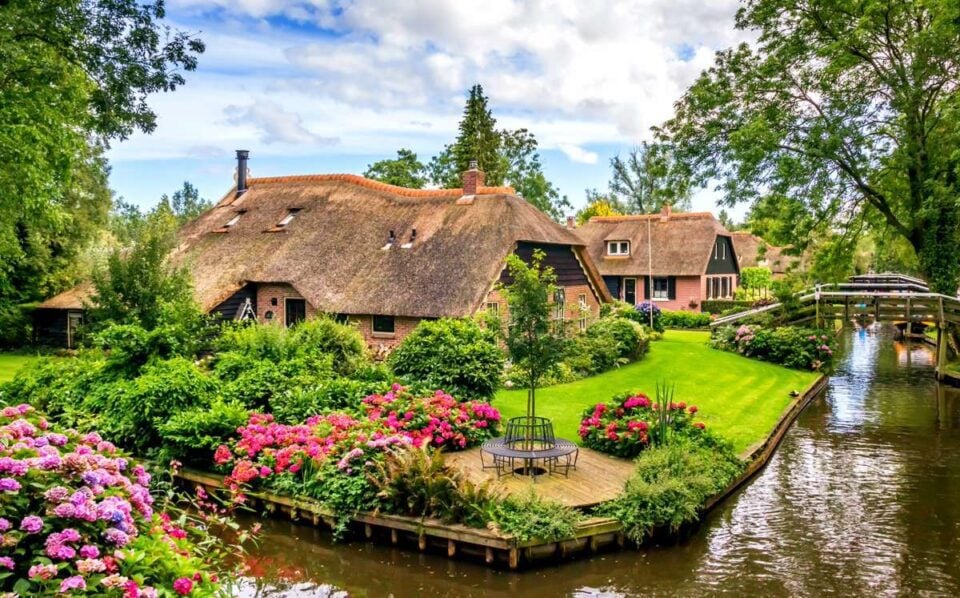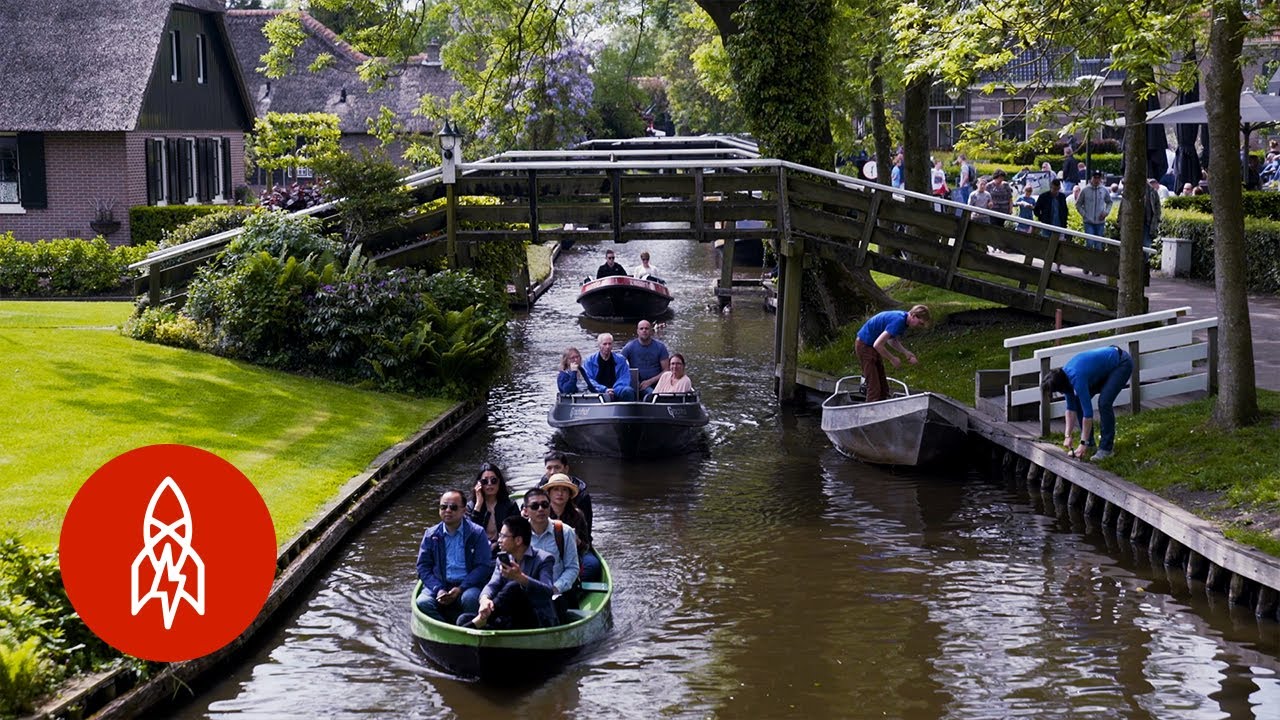For lovers of visiting the most unusual places in the world, the wonderful village of Giethoorn (Giethoorn) in the Netherlands will surely be to their taste. This is a very small settlement, notable primarily because it has no streets – it is located in the middle of water. That is why it is also known as the “Dutch Venice.”
Giethoorn — the Village Without Roads
However, the real Venice is submerged in water because the land it was built on is slowly sinking into the sea. In Giethoorn, each of the houses ended up on its own island due to the actions of the residents themselves. The main occupation of the villagers was peat extraction. They dug it where it was most convenient – right in front of their homes. Over time, the peat was exhausted, leaving pits that gradually filled with water. As a result, even getting to the neighbors requires a boat.

Naturally, Giethoorn did not become the Dutch Venice immediately: the village has existed since the 13th century. It was founded by people from the south of the country, fleeing from a devastating flood.
Today, Giethoorn (Overijssel province, northern part of the Netherlands) has approximately 2,600 residents. It is a quiet and cozy place, extremely popular with tourists. The village is very picturesque (like many other Dutch villages), but its special charm comes from the numerous bridges (there are more than 170) and the residents moving around in boats. The bridges are quite arched: this is done specifically so that it is convenient to sail under them.
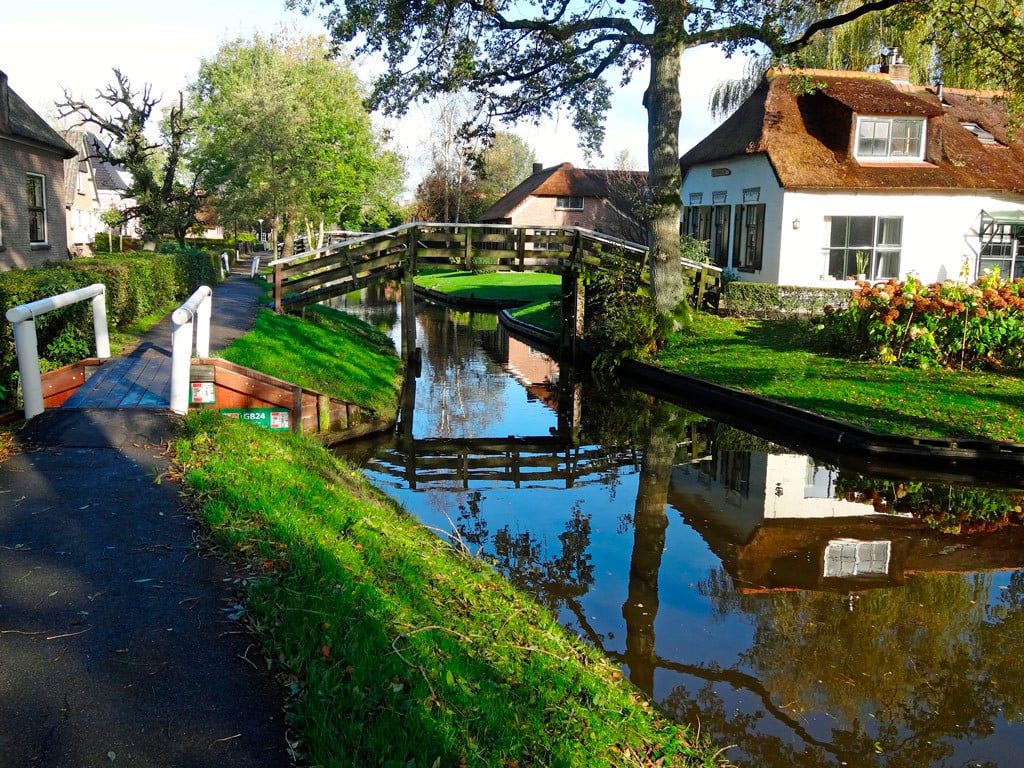
There are practically no roads here. The only thing the residents could not give up is cycling (as is known, the Dutch cannot imagine life without bicycles). Therefore, the village has paths for cyclists, which can also be used for walking.
Transport in Giethoorn
Nevertheless, the main mode of transport in the village is boats, which are in every house. Cars are not used here, but there are various types of boats: rowing, inflatable, motor. Some residents have boats, and the largest means of transport is the electric boat. But all without exception work only on electricity: both gasoline (even the highest quality) and diesel are prohibited here. As a result, there is almost no noise from the engines, and tourists call these means of transport whispering boats.
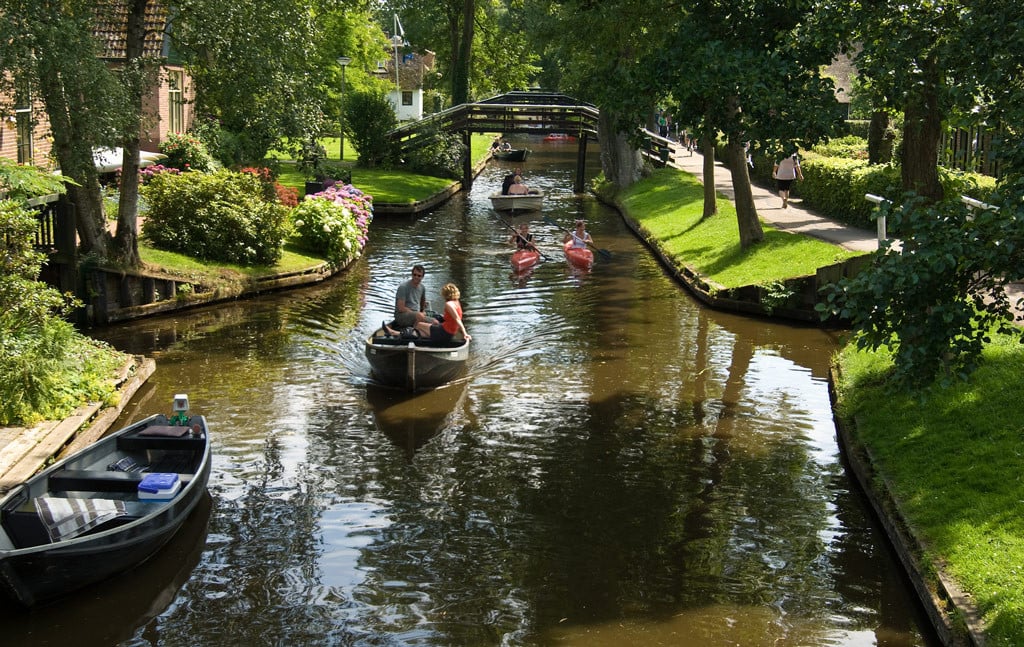
Not far from the village is a large national park. As expected, there is a church and several museums. Tourists are shown how local farmers live (there is a rural house-museum in Giethoorn), told about the features of ceramic production, and shown a collection of precious stones.
History of the Village Without Roads
The world learned about the unusual Dutch village in the 1960s. It was made famous by the well-known director Bert Haanstra, who captured it in the comedy film “Fanfare.” The beauty of these places so impressed people that Giethoorn soon became a real tourist Mecca.
People come here to enjoy the delightful landscapes and soothing silence, to immerse themselves in the atmosphere of the 18th century – almost everything here has been preserved in the same form as it was more than 200 years ago. Even the roofs of many houses are still covered with straw, as in the Middle Ages only very wealthy people could afford tiled roofing. Meanwhile, there is an abundance of reed in the surrounding area, which is used for roofing. By the way, now houses with straw roofs are more expensive than those with tiled roofs, as they are considered a Dutch classic.
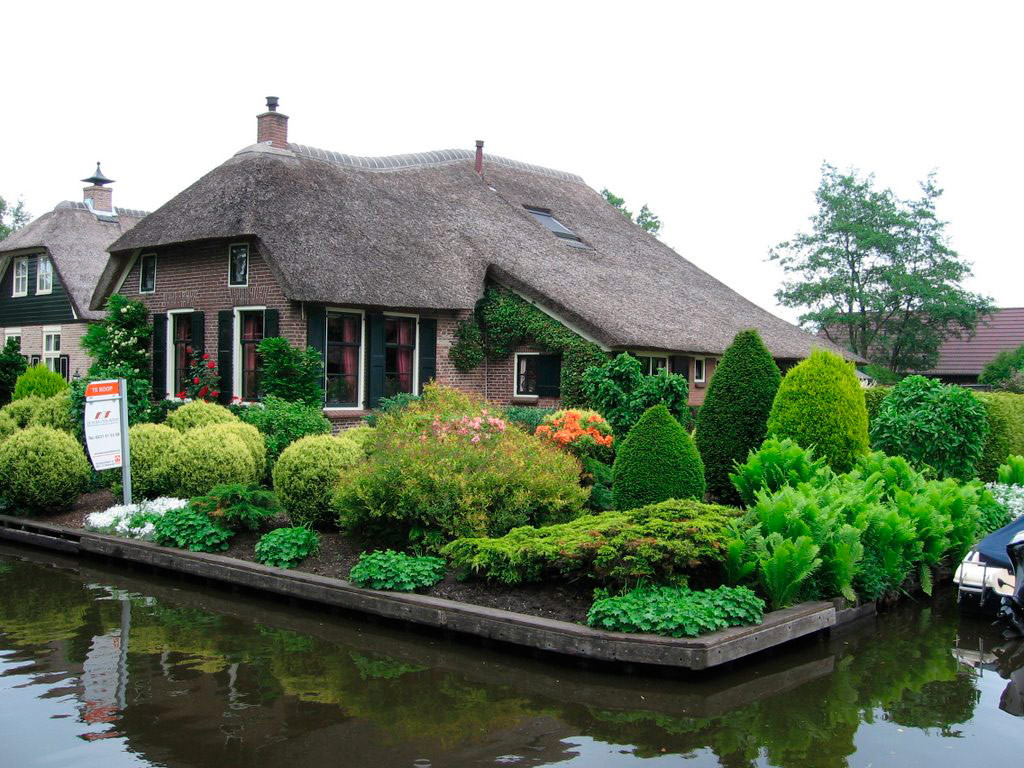
Another feature that immediately attracts tourists’ attention is the abundance of goat horns. They decorate the walls of houses, fences, roofs. The name of the village itself – Giethoorn (the Dutch pronounce it “Githorn”) – comes from a phrase meaning goat horns. There is a legend that the founders of the village, arriving at this place in 1230, were the first to see goat horns lying on the ground in large numbers. Apparently, in ancient times, this area was flooded, and a whole herd of goats ended up underwater, and the horns were the only thing that could be preserved in the water. Travelers gladly photograph this local landmark and take pictures against its background.
Where to Stay in Giethoorn
Despite its small size (the length of the settlement is only 6 km), the village has several hotels (about ten) – so travelers can take their time to visit everywhere and see everything at once, but stay in this quiet place for a few days.
- De Dames Van De Jonge Hotel Restaurant Giethoorn
- Hotel de Pergola Giethoorn
- Chalet park Kroondomein Giethoorn
- Hotel Giethoorn
What to Do in Giethoorn
Here you can go fishing – the local lakes are rich in fish. However, fishing is only allowed with the appropriate permission from the local authorities and in accordance with the fishing rules: there are quotas in Giethoorn, and exceeding them can result in police intervention. You can also simply ride along the canals: boats and motorboats are available for rent. By the way, traffic is organized here: there are even traffic lights and other signs on the canals, so you will have to follow the water traffic rules.
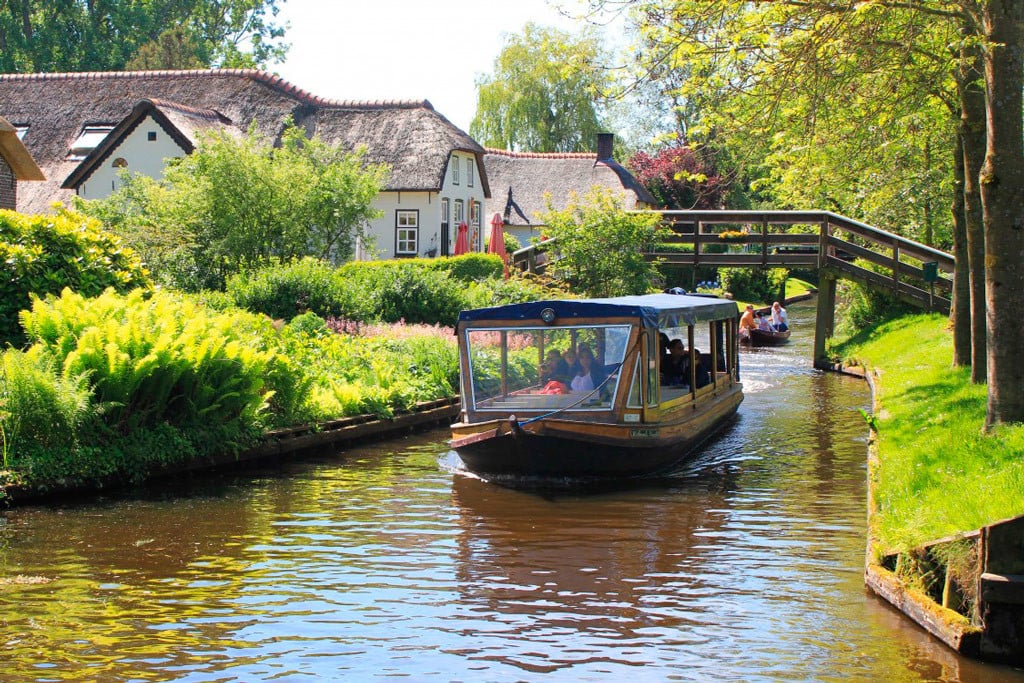
In the evening, tourists are welcomed by the owners of bars and small home restaurants, where in an atmosphere of comfort and tranquility, you can try dishes of Dutch and Belgian cuisine. For the villagers, tourism is one of the main sources of income, so travelers are always welcome here.
How to Get to the Village
You can get to Giethoorn from Amsterdam by train. The journey takes two and a half hours, with 2 transfers. From the final stop – Steenwijk – a bus goes to the village, and from there – on foot or by boat. By the way, the locals also leave their cars before entering the village: there is a specially made parking lot.
It is the absence of motor vehicles that ensures such an unusual silence for modern people in this place and creates an atmosphere of peace and tranquility. There is no charge for visiting the village – after all, it is a regular settlement, not an attraction. You will only have to pay if you want to rent a boat or stay in a hotel.
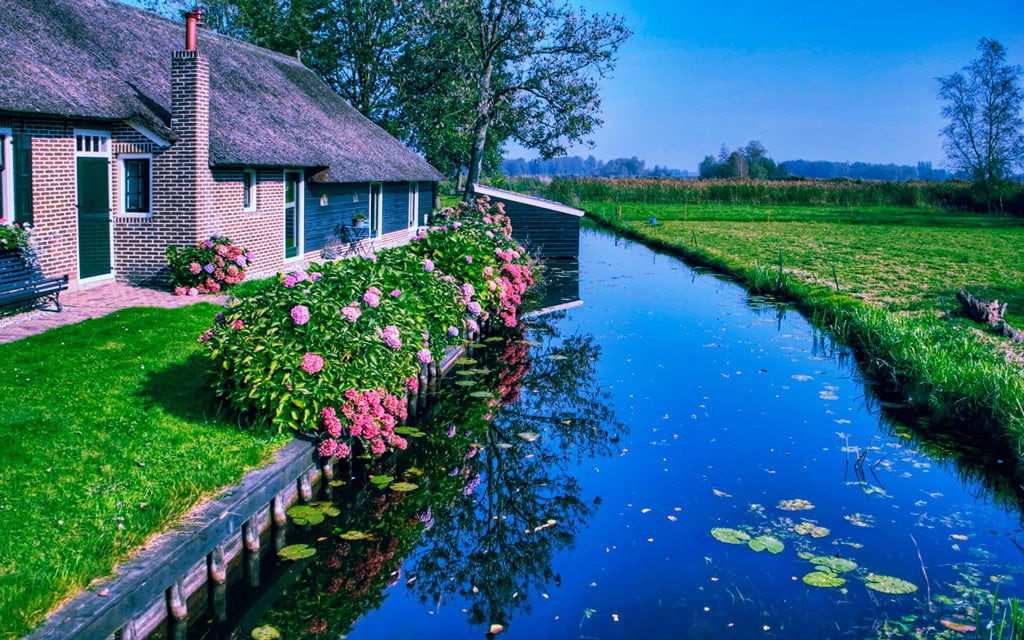
Almost all travelers are delighted with Giethoorn – and not just because of the uniqueness of this place. It feels that the villagers themselves love their small homeland very much. They consider their village the only place in the world where you can be in harmony with yourself and take care of it as best they can. All houses are very well maintained, and flowers and greenery please the eye almost all year round: each homeowner arranges a lawn in front of their house, plants trees and shrubs, and regularly trims them.
Buying a House
Many foreigners like the village so much that they start asking how they can buy a house here. However, guides have to disappoint potential buyers: houses here are not for sale, they can only be rented temporarily. The locals categorically do not want to change their usual way of life and only let foreigners with their modern manners and customs in for a short time. However, tourists also get the most out of visiting Giethoorn: the silence and tranquility allow them to completely relax and calm their nerves, which are wound up by the modern pace of life.
Returning home, many tourists, remembering this place and telling their friends about it, call it a paradise, a “fairy-tale unreality.” They say that in the village, there is a feeling that you are transported back in time at least 300 years.

